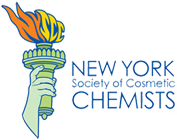Grab a jar of face cream off your dresser, and compare it with the milk in your fridge. Chances are you would notice the relative turbidity, or cloudiness, of both of these substances. Both the face cream and milk are just two examples of colloids. From the word “kolla”, meaning glue in Greek, the term “colloid” was first used in the 1860’s to distinguish this class of materials from crystalloids such as sugar and salt.1
Colloids exist in nature and in manmade materials. A host of other examples come to mind: clouds, fog, whipped cream, hydrogels, and –of particular interest to cosmetologists— shaving lather, aerosol sprays, hydrogels, creams, lotions, and foams.
A colloid consists of dispersed particles (between one nanometer and one micrometer), and a dispersion medium, either of which can be a gas, liquid, or solid in any combination.2 In recent years, there has been a renaissance of interest in the study of scientific phenomena at the nanometer scale.
At the Weck Lab3 in NYU’s Molecular Design Institute, the programmable, self-assembling behavior of colloids are studied. These smart designer colloids are fabricated with molecules on their surfaces, which enable them to self-organize into two or three-dimensional structures by controlling the combination or sequence of each colloidal cluster. Such principles draw heavily from Nature’s design, as seen in the DNA double-stranded helix, where complementary and self-recognition pair units exist in a directional, design-driven, and pre-programmed manner to control 3D structure.
With the ability to decorate nanoparticle surfaces, this methodology opens the door to a myriad number of applications, including those in personal care and cosmetics. Colloidal particle surfaces can be studded with anything ranging in size from short organic molecules like hydroxyacids, to polymer chains, and everything in between. In this fashion, colloidal particles can be programmed to yield unique surfaces, so that they behave similarly to enzymes in Nature with specific functions.
These colloidal functional handles enable the sequestering of active ingredients like humectants or anti-aging ingredients for skin care products for more effective performance, or control the organizational pattern in solution for product stability or performance enhancement. In the Weck group at NYU, colloids are functionalized with complementary pair DNAs, and supramolecular recognition units like the palladium-pincer/pyridine pair, directing particles to come together in solution like complementary puzzle pieces in a sequence-controlled manner. By programming colloidal surfaces and controlling their interfaces, scientists are able to control the way colloids organize and behave in their dispersed medium, changing the properties and function of these materials.
As the cosmetic world continues to respond to customer-driven interest in products with novel delivery systems and unusual product formula to contain active ingredients, the colloids symposium to be held next month in New York July 9th -12th, might be of special interest to those in the industry who desire a quick enquiry into the world of colloids, for potential uses in personal care products, biotechnology, and the like.
Thriving on strong international attendance by participants from academia, industry and national laboratories, concurrent exciting trends in colloidal and surface science research will be highlighted in the Symposium: two plenary lectures, 13 technical symposia, the Unilever Award Lecture, the Victor K. LaMer Award Lecture, a poster session, and an instrument exhibition. A social program is planned as well, including a Sunday evening dinner reception, a Monday evening poster session with refreshments, and a Tuesday evening Symposium Banquet.
All interested in the recent exciting developments in colloids and surface science are welcome! To register for the symposium http://colloids2017.org/register.html
- Jirgensons, B.; Staumanis, M. E. A Short Textbook of Colloid Chemistry, 1962, Second Edition, Pergamon Press Ltd., New York, USA.
- Hiemenz, P. C.; Rajagopalan, R. Principles of Colloid and Surface Chemistry, 1997, Third Edition, CRC Press, New York, USA.
- Weck Group Research. Weck Group, 2014. Web. June 9, 2017 Accessed. http://weckresearch.com/COLLOIDS
Guest Author: Diane Lye
 Diane Lye is a researcher in the field of polymer chemistry. She has multiple years of experimental wet lab experience and in originating and developing ideas to fruition, with prior exposure to company strategy. A strong believer in using the carrot rather than the stick, she enjoys encouraging and mentoring juniors and peers, and was awarded a Dean’s Outstanding Teaching Fellow Award in the Sciences by New York University. She is completing her Ph.D. in the Weck Lab at NYU Molecular Design Institute, where her primary area of research is on supramolecular block copolymers. Diane enjoys learning about matters outside of her research scope, particularly in the quantification of the amorphous and intangible, on topics ranging from business psychology to the science of trust and love. In a previous life, she was a prize-winning classical pianist.
Diane Lye is a researcher in the field of polymer chemistry. She has multiple years of experimental wet lab experience and in originating and developing ideas to fruition, with prior exposure to company strategy. A strong believer in using the carrot rather than the stick, she enjoys encouraging and mentoring juniors and peers, and was awarded a Dean’s Outstanding Teaching Fellow Award in the Sciences by New York University. She is completing her Ph.D. in the Weck Lab at NYU Molecular Design Institute, where her primary area of research is on supramolecular block copolymers. Diane enjoys learning about matters outside of her research scope, particularly in the quantification of the amorphous and intangible, on topics ranging from business psychology to the science of trust and love. In a previous life, she was a prize-winning classical pianist.

